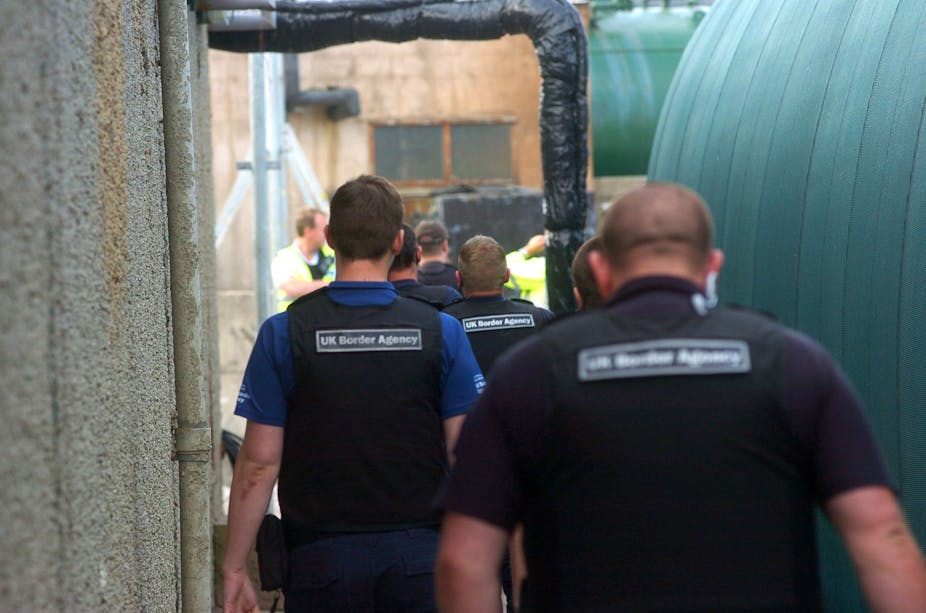In the week that saw the British press rightly condemning the use of Twitter to send violent threats to several women, the Home Office started to use the social media site to publicise operations to carry out its threat to expel more illegal immigrants.
The Home Office has been tweeting images of enforcement officers apprehending through force people suspected of working illegally in the UK with their faces gently blurred. A running feed of Home Office tweets celebrated triumphs including the discovery of “suspected visa overstayer” (surely, no greater threat to the security of our fragile borders) at the most unassuming of locations: a “Swansea nail bar”. Each tweet congratulated a rising tally of arrested undesirables: first 62, then 94 and soon 139 people were claimed to have been carted off in a series of raids.
The backlash was instant, with several high profile Twitter users criticising the feed. Comedian David Schneider mocked the Home Office for its coverage of the “preliminary rounds of the UK Hunger Games”, while journalist Charlie Brooker likened the live updates to a “tweet-a-long-a-stormtroop gallery”.
The Home Office’s decision to use social media in this way seems mistaken and potentially dangerous. Perhaps we might expect tabloid newspapers to distribute images of individuals when arrested and prior to any conviction but it is highly disappointing to find a government department following suit. In one tweet, the Home Office even went a step further by identifying 14 of those arrested as, to use the hashtag, #immigrationoffenders, rather than suspected immigration offenders.
These images are distributed to all 98,000 of the Home Office’s Twitter followers and freely accessible to the wider Twittersphere with millions of potential readers. It would appear that every person apprehended has been convicted before any trial or legal confirmation that, in fact, they truly are an illegal immigrant. We should demand that the Home Office does not treat anyone as guilty before charged. And it will be interesting to see if anyone captured in the photos is innocent after all.
A further problem is that the idea this kind of activity is what the public wants to see. The idea rests on a mistake that the we, the public, so concerned with immigration, will sleep better and feel greater security if the Home Office broadcasts its activities as if its staff were the stars of a new series of COPS.
It is highly doubtful that releasing images and a few numbers on Twitter will make any substantive effect of addressing the public’s concerns about immigration. Most do not make any use of Twitter. So distributing these images under the banner of “immigration offenders” does not achieve any wider goal save attributing guilt before it is due. The images shame people not as individuals, but as a class - the unwanted, the immigrant offender - and without confirmation of wrongdoing. Such stigmatisation of a group is a kind of disintegrative shaming that contributes to mistrust and feeds suspicions that are ill-suited to a decent society.
If the Home Office wants to tackle fears about immigration, then it should focus on the problem of the general anxiety that feeds these fears. A major challenge for all political parties is the problem of overcoming insecurity about employment, housing, crime and declining standards of living. It is insecurity over these issues that contributes to concerns about immigration. Immigrants are blamed for problems in unemployment, rising crime, housing shortages and other social challenges all independently of the fact that immigration may contribute little, if anything, to these challenges.
But the worst outcome is to feed public insecurity about several complex social challenges through the lens of a common enemy, the immigration offender, by celebrating tough cops as they pounce on potentially innocent people. Sometimes looking like doing something is worse than doing nothing at all.

